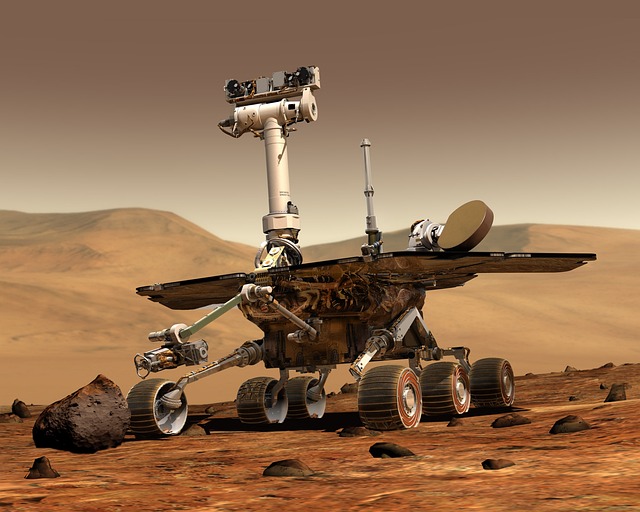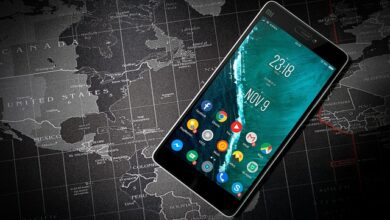Quantum Sensing Technologies Enable Unprecedented Precision

Are you ready to delve into the fascinating world of quantum sensing technologies? Hold on tight as we explore how these cutting-edge advancements are revolutionizing precision in ways we never thought possible.
Imagine having the ability to detect and measure the tiniest details of our universe with unparalleled accuracy. That’s exactly what quantum sensing technologies offer—a remarkable leap forward in precision measurement. From detecting gravitational waves to enhancing medical diagnostics, these technologies are opening up a realm of possibilities.
At the heart of quantum sensing lies the concept of superposition—the mind-boggling ability of quantum particles to exist in multiple states simultaneously. By harnessing this phenomenon, scientists have developed sensors that can surpass classical limits and achieve unprecedented levels of precision.

One prominent application of quantum sensing is in the field of navigation and positioning systems. Traditional GPS technology heavily relies on satellite signals, which can be unreliable in certain environments. Quantum sensors, on the other hand, utilize atomic clocks and inertial sensors based on atoms or ions, enabling ultra-precise measurements of acceleration, rotation, and magnetic fields. This means aircraft, autonomous vehicles, and even submarines can navigate with utmost precision, ensuring safer and more efficient journeys.
Another exciting area where quantum sensing technologies shine is in healthcare. Magnetic resonance imaging (MRI) is a prime example. By leveraging the quantum property of spin, quantum sensors enhance the sensitivity and resolution of MRI machines. This enables doctors to obtain highly detailed images of internal organs, aiding in early detection and precise diagnosis of diseases.
But quantum sensing doesn’t stop there. It has proven instrumental in fundamental scientific research, such as detecting gravitational waves—an extraordinary accomplishment that earned the 2017 Nobel Prize in Physics. Quantum sensors can detect minuscule vibrations caused by gravitational waves, providing us with invaluable insights into the workings of the universe.
Quantum sensing technologies have ushered in a new era of precision. From revolutionizing navigation systems to advancing medical diagnostics and unraveling the secrets of our universe, these technologies are pushing the boundaries of what we thought was possible. The future holds unlimited potential as scientists continue to unlock the power of quantum sensing, propelling us into a realm of unprecedented precision like never before.
Quantum Sensing Technologies Revolutionize Precision Measurements in Scientific Research
Are you ready to dive into the fascinating world of quantum sensing technologies? Prepare to be amazed as we explore how these revolutionary advancements are transforming precision measurements in scientific research. Gone are the days when traditional measurement techniques constrained our understanding of the universe. Quantum sensing technologies have opened up new frontiers, allowing us to probe deeper and with unprecedented accuracy.
Imagine being able to detect the tiniest fluctuations in physical quantities or observe the behavior of individual particles. Quantum sensing makes this possible by harnessing the peculiar properties of quantum mechanics. It takes advantage of phenomena like superposition and entanglement, where particles can exist in multiple states simultaneously or become intrinsically linked across vast distances. This allows researchers to create ultra-sensitive devices capable of detecting and measuring the most subtle changes in the environment.

One of the most promising applications of quantum sensing is in gravitational wave detection. These ripples in the fabric of spacetime, caused by cataclysmic cosmic events, were first predicted by Einstein over a century ago. However, it was only with the advent of quantum sensors that we gained the ability to directly observe these elusive waves. By meticulously measuring infinitesimal changes in the distance between suspended mirrors, quantum interferometers can detect even the faintest gravitational wave signals, opening up a new window into the cosmos.
But the impact of quantum sensing extends far beyond astrophysics. In fields like medicine and materials science, precise measurements are crucial for advancing our understanding and developing innovative technologies. Quantum sensors offer unparalleled sensitivity, enabling researchers to delve into the mysteries of biological processes or identify subtle structural flaws in materials. For example, quantum magnetic resonance imaging (MRI) holds the promise of enhanced imaging resolution, providing detailed insights into the human body at the molecular level.
Quantum sensing technologies are revolutionizing precision measurements in scientific research. With their unmatched sensitivity and ability to probe the quantum realm, these cutting-edge devices are pushing the boundaries of what we can observe and measure. From gravitational wave detection to medical imaging, the impact of quantum sensing is transforming various disciplines. As we continue to unlock the potential of these remarkable technologies, we embark on a new era of scientific discovery, where even the most intricate details of our universe are within reach.
Unlocking the Quantum Realm: How Quantum Sensing Technologies Are Reshaping Measurement Accuracy
Have you ever wondered how accurate our measurements can truly be? In a world where precision is paramount, scientists and researchers are delving into the quantum realm to unlock a new frontier of measurement accuracy. Enter quantum sensing technologies, the game-changers that are revolutionizing our understanding of the world around us.

But what exactly is the quantum realm? Picture a realm so infinitesimally small that it defies our conventional understanding of reality. At this scale, the laws of classical physics no longer hold true, giving rise to mind-bending phenomena. Harnessing these peculiarities, quantum sensing technologies utilize the principles of quantum mechanics to achieve unprecedented levels of measurement precision.
One of the most remarkable applications of quantum sensing is in atomic clocks. These timekeeping devices utilize the oscillations of atoms as a precise reference for measuring time. By leveraging the inherent properties of quantum systems, such as superposition and entanglement, atomic clocks can attain accuracies on the order of one second every 33 billion years. Yes, you read that right – billions of years without losing or gaining a second!
Quantum sensors are also transforming navigation and positioning systems. Traditional GPS technology relies on satellite signals, which can be affected by interference and limited in accuracy. Quantum sensors, on the other hand, exploit quantum phenomena to measure acceleration, rotation, and magnetic fields with unparalleled precision. This opens up possibilities for enhanced navigation systems, autonomous vehicles, and even improved earthquake detection.
Moreover, quantum sensing is revolutionizing medical diagnostics. Magnetic resonance imaging (MRI) machines, powered by quantum sensor technology, provide detailed images of our internal organs and tissues. With higher sensitivity and resolution, doctors can detect abnormalities at earlier stages, leading to more effective treatments and ultimately saving lives.
Quantum sensing technologies are reshaping measurement accuracy across various fields. By tapping into the quantum realm, scientists are pushing the boundaries of what is possible. From atomic clocks to navigation systems to medical diagnostics, the impact of quantum sensing is profound. As our understanding deepens, we stand at the precipice of a new era of measurement accuracy, where the unimaginable becomes reality.
Breaking Boundaries: Quantum Sensing Takes Precision to New Heights

Have you ever wondered how scientists are pushing the limits of precision measurement? Enter quantum sensing, a groundbreaking technology that is revolutionizing the way we understand and interact with the world around us. In this article, we’ll delve into the fascinating realm of quantum sensing and explore how it is taking precision to new heights.
Imagine being able to measure the tiniest details with unprecedented accuracy. That’s precisely what quantum sensing enables us to do. By harnessing the peculiar properties of quantum mechanics, scientists have unlocked a new realm of possibilities for measuring physical phenomena. Whether it’s detecting magnetic fields, measuring temperature, or even tracking biological processes, quantum sensing offers unparalleled precision.
At the heart of quantum sensing lies the concept of quantum entanglement. This mind-boggling phenomenon allows particles to become intrinsically connected, regardless of the distance between them. By manipulating entangled particles, scientists can create incredibly sensitive sensors capable of detecting infinitesimal changes in their environment.
To illustrate the power of quantum sensing, let’s take a look at an example. Imagine you’re on a treasure hunt, searching for a hidden chest. In the past, you might have used a metal detector to aid your search. While effective to a certain degree, traditional metal detectors have limitations when it comes to pinpointing the exact location of the chest. Now, imagine having a quantum sensor in your hands. It would be like having a superpower! The quantum sensor could precisely determine the chest’s position, even if it’s buried deep underground or concealed within other materials.
Beyond treasure hunting, the applications of quantum sensing are vast and diverse. It has the potential to revolutionize fields such as medicine, geology, and environmental monitoring. For instance, quantum sensors could enhance the accuracy of medical imaging techniques, allowing doctors to detect diseases earlier and with greater precision. They could also provide valuable insights into Earth’s magnetic field, helping us better understand our planet and its geological processes.
Quantum sensing is pushing the boundaries of precision measurement. By harnessing the intriguing principles of quantum mechanics, scientists are unlocking a new era of accuracy and sensitivity. The potential applications of this technology are vast, from improving medical diagnostics to advancing our understanding of the natural world. As we continue to explore the wonders of quantum sensing, it’s truly awe-inspiring to witness how this groundbreaking technology is taking precision to new heights.
Quantum Leap in Precision: Discovering the Potential of Quantum Sensing Technologies
Are you ready to embark on a mind-bending journey into the realm of quantum sensing technologies? Prepare to be amazed as we explore the astounding potential of this groundbreaking field. In this article, we’ll delve into the quantum leap in precision that these technologies offer and how they can revolutionize various industries.
Imagine having the ability to measure with unparalleled accuracy, surpassing the limitations of classical sensors. Quantum sensing technologies make this feat a reality by harnessing the mind-boggling phenomena of quantum mechanics. These technologies utilize quantum properties such as superposition and entanglement to achieve unprecedented levels of precision.

One fascinating application of quantum sensing is in navigation and positioning systems. Traditional GPS relies on signals from satellites, which can be hindered by obstacles or weak signals. Quantum sensors, on the other hand, detect subtle changes in the environment, allowing for precise positioning even in challenging conditions. This opens up exciting possibilities for autonomous vehicles, infrastructure monitoring, and disaster response.
Another area where quantum sensing shines is in medical diagnostics. Imagine a sensor so sensitive that it can detect diseases at their earliest stages, enabling timely interventions and potentially saving lives. Quantum sensors have the potential to provide ultra-precise measurements of biological markers, revolutionizing fields like genomics and personalized medicine.
The field of quantum sensing also holds promise in environmental monitoring. By detecting minute variations in physical properties, such as magnetic fields or gravitational forces, these sensors can help us better understand our planet. From studying climate change to mapping underground resources, quantum sensing technologies offer an unprecedented level of insight into the world around us.
But the potential of quantum sensing doesn’t stop there. It extends to a wide range of applications including defense, telecommunications, and more. As researchers continue to push the boundaries of what is possible, we can expect even greater advancements in this field.



